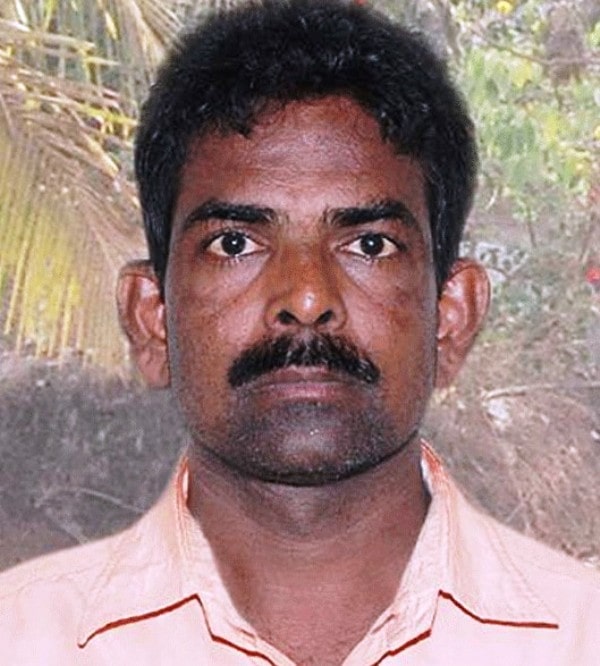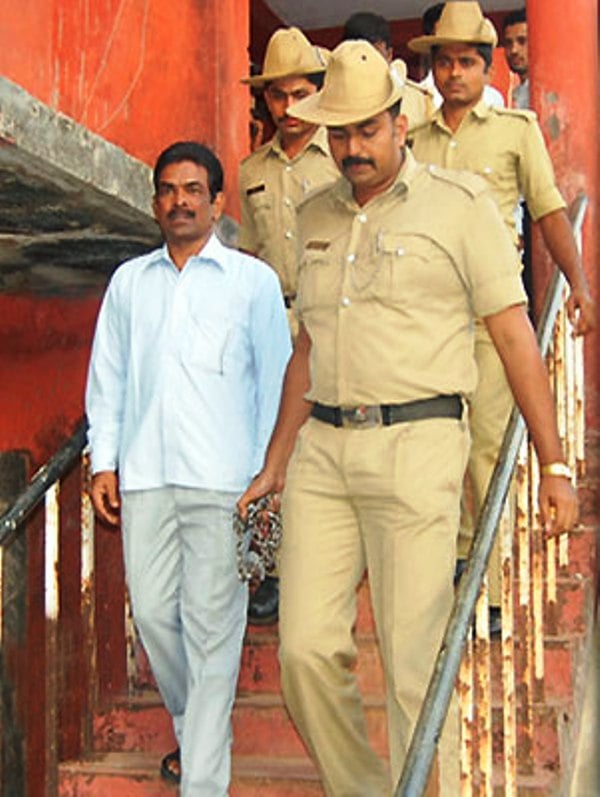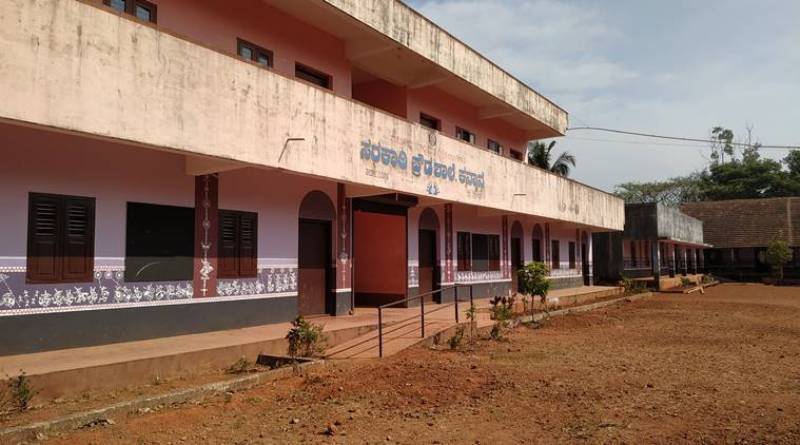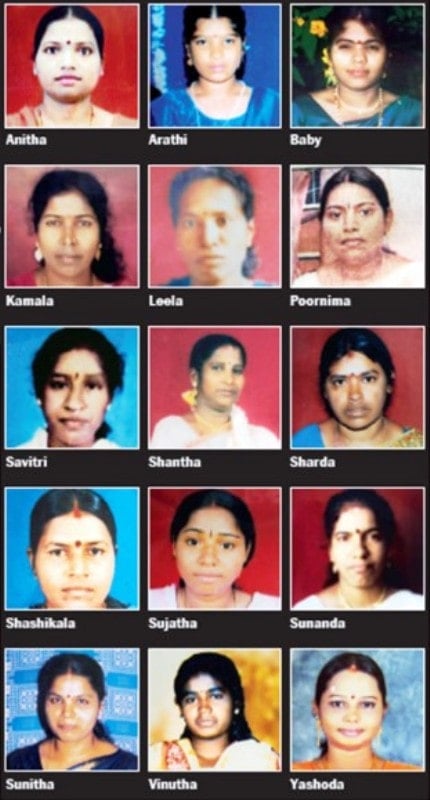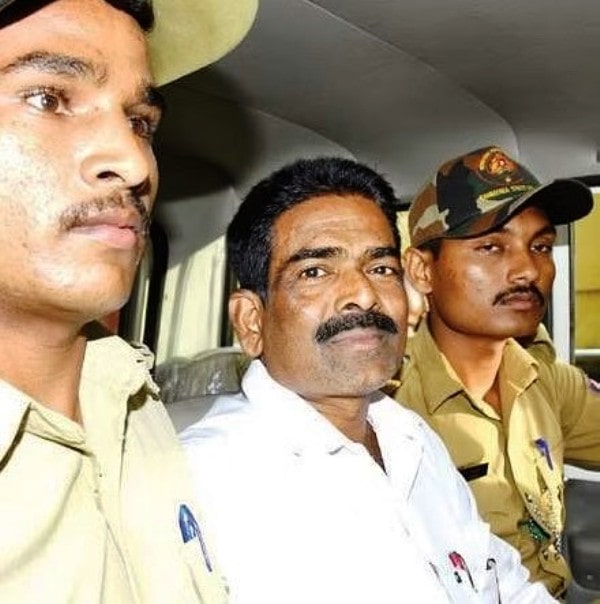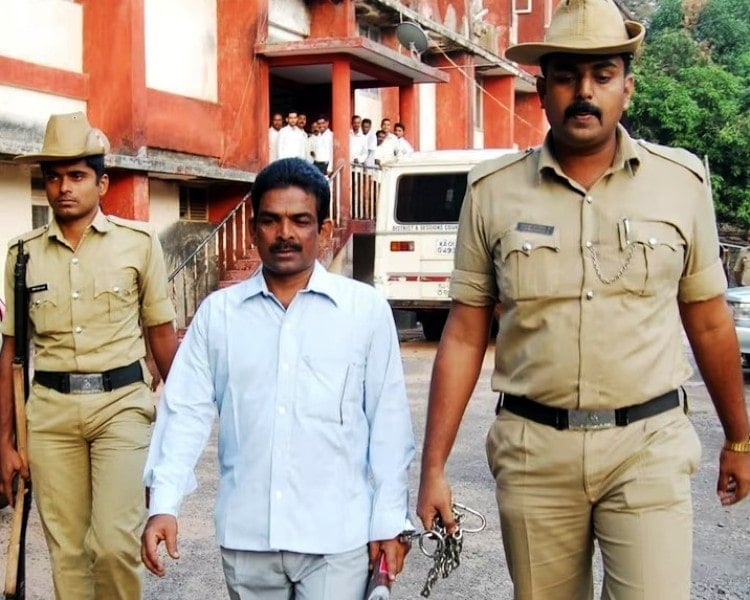Mohan Kumar (Cyanide Mohan) Age, Wife, Family, Biography & More
| Bio/Wiki | |
|---|---|
| Full name | Mohan Kumar Vivekanand |
| Other name(s) | • Bhaskar [1]The New Indian Express • Bhaskara |
| Profession | Former Teacher |
| Notorious for | Being convicted in the rape and murder of 20 women in Karnataka. |
| Physical Stats & More | |
| Height (approx.) | in centimeters- 168 cm in meters- 1.68 m in feet & inches- 5’ 6” |
| Eye Colour | Dark Brown |
| Hair Colour | Black |
| Personal Life | |
| Date of Birth | 6 April 1963 (Wednesday) |
| Age (as of 2023) | 60 Years |
| Birthplace | Kanyana Village, Dakshina Kannada district, Karnataka |
| Zodiac sign | Aries |
| Nationality | Indian |
| Hometown | Kanyana Village, Dakshina Kannada district, Karnataka |
| School | He completed his schooling at a government school in Karnataka |
| College/University | Government First Grade College Uppinangady, Dakshina Kannada, Karnataka |
| Educational Qualification | BA in Physical Education [2]The Indian Express |
| Religion | Hinduism |
| Caste | Dalit (Scheduled Castes) [3]The Indian Express |
| Relationships & More | |
| Marital Status | Married |
| Affairs/Girlfriends | Mary Note: He met Mary when he worked at the Shirdi Primary School as a teacher. Back then, Mary was his student and studied in 7th class. There, Mohan and Mary entered into a relationship that led to marriage when Mary turned 18. |
| Marriage Date | First Marriage- 1987 Second Marriage- 1992 |
| Family | |
| Wife/Spouse | First Wife- Mary Second Wife- Manjula Third Wife- Sridevi (works at a finance firm in Mangaluru) Note: Mohan divorced his first wife after she did not agree to Mohan's demands of changing her religion from Christianity to Hinduism. His third wife left him after she fell in love with a prisoner whom she met when she used to visit Mohan in jail. |
| Children | From each of his wives, he has two children. |
| Parents | Father- Maielappa Mogera (daily wage labourer) Mother- Tukru (daily wage labourer) |
| Siblings | He has two brothers and a sister. His brother, Ramesh Kumar, was a daily wage labourer. His other brother served in the Karnataka State Road Transport Corporation (KSRTC) as a conductor. His sister is a retired postal department's employee. |
Some Lesser Known Facts About Mohan Kumar
- Mohan Kumar is an Indian mass murderer and sex offender who gained notoriety in 2009 after he told cops about murdering thirty-two women in Karnataka. Mohan is also known as Cyanide Mohan as he used to kill his victims with cyanide. Mohan’s real-life incidents were depicted in the 2023 Hindi web series Dahaad.
- According to Ramesh Kumar, Mohan’s brother, Mohan was antisocial in childhood.
- In school, Kumar was average in his studies. He often participated in sports like cricket and kabaddi.
- Mohan started working as a contractual government teacher at the Shiradi Primary School in Kanyana, Karnataka, in November 1984. According to his close associates, despite Mohan not having a Diploma in Education (D.Ed), he secured the job as he belonged to the Dalit Community. In the 1980s, a Dalit candidate didn’t need to have a D.Ed. to get a job as a government teacher. In an interview, a close friend of his talked about it and said,
Kumar entered government service as a primary school teacher on a contractual basis right after his graduation, even though he didn’t have a teaching diploma. In those days, reservation for the Dalits ensured a direct entry into teaching service without a diploma (D.Ed).”
- While serving as a teacher, Kumar often faced suspension for behaving inappropriately with the students and taking unprecedented leaves without informing the authorities.
- According to several sources, Kumar was removed from the service in 2003 after he pushed a woman into a river and was arrested by the police on the charges of attempted murder; however, he was released from prison a month after his arrest. While giving an interview, Kumar refuted the charges against him and claimed that the woman jumped into the river after he refused to get married to her. Talking about it, he said,
There was a woman who wanted to marry me but when I refused; she started arguing with me and fell in the river Netravathi. But some fisherfolks nearby thought I had pushed her and registered a complaint against me.”
- According to the chargesheet of the Karnataka Police, Mohan murdered one woman in 2004, three women in 2005, four women in 2006, three women in 2007, two women in 2008, and nine women in 2009. While describing his modus operandi, the Chargesheet revealed that Mohan’s victims were women (in their mid-20s and early 30s) who hailed from a poor family and had crossed their marriageable age. It was also revealed that he searched for his victims at public places like bus stands and restaurants. After closing in on his victim, he would try and engage the women by posing as a well-established man searching for a suitable partner to get married to. After conversing for a while, he asked his victims for their contact information and would begin talking to them on call. Kumar also spoke to the victims’ families to show how serious he was about getting married. After talking to his victims for some time, he would set up a date of marriage and pick a wedding location far away from the victim’s residence. He would then not only persuade the victims to come unaccompanied to the selected location with the jewellery but also their families to not inform anyone about their marriage till it was done. Once his victims reached his selected location, Mohan took them to a lodge, where they spent a night and indulged in intimate acts. The following day, he would give his victims contraceptive pills laced with cyanide to avoid getting pregnant and ask them to swallow the pill in the restrooms on the bus stands as they might feel the urge to relieve themselves after taking the pill. He also persuaded his victims to leave the jewellery in the lodge before leaving. Reportedly, he got his hands on cyanide through his friend who was a jeweller. After sending the victims into the restrooms with the pills, he would wait for them for some time and then go back to the lodge, gather their personal belongings and jewellery that they brought and leave the location. To avoid arousing suspicion, Kumar maintained contact with the families of the victims on the phone to give them a sense of satisfaction that the victim was alright and happy with her marriage. While giving an interview, a cop said,
The family may file a complaint when she goes missing, but once they realise that she has run away and is safe, they don’t bother proceeding with the complaint. They forget about it and move on.”
- Each time he murdered a woman, the Karnataka Police registered a case under unidentified death (UDR). Later, an investigation revealed that the exact reason for the victim’s death was not established in previous cases because the cops delayed taking the body for an autopsy, adopting a slow approach.
- The police force swung into action in 2009 after a woman named Anitha Mulya was reported missing in October. Several Hindu organisations believed her going missing to be a case of “love jihad.” The situation spiralled out of control when one right-wing organisation captured a police station and demanded that the culprits be brought to justice. After the entire ordeal, the Bantwal Police Station assembled a team of police officers to look into the missing case of Anitha.
- While investigating, the team found her lifeless body in a public washroom at a bus stand. She had died in the same way in which Kumar had killed his previous victims.
- Thereafter, the police retrieved her call records after analyzing which it was established that she had called a particular number several times. The number was registered in the name of a Madikeri resident named Sridhar who told the police that he had given the SIM card to his sister Kaveri, who went missing on 17 March 2009. After further analyzing Kaveri’s call records, it was revealed that she was in touch with two other girls, Vinutha from Puttur and Pushpa from Kasaragod, Kerala, who had also gone missing.
- Suspecting a larger motive behind the disappearance of the women, the team of investigators requested the police stations from other parts of Karnataka to provide give them with information about the missing women from their respective areas of responsibility. After receiving the reports, the team began analyzing the missing women’s call records in which they discovered that many women had received a call from a phone with the same IMEI number registered in the name of Mohan Kumar’s uncle who told the policemen that the phone was being used by Mohan and not him. A cop talked about it in an interview and said,
The owner of the cell phone admitted that it was his hand-set, but added that he had given it to his nephew by the name of Mohan Kumar, a teacher.”
- In 2009, Sumithra, a tailor from Deralakatte, told the cops that she had seen Anitha and Mohan getting on a bus to Hassan at the bus stand. She also said that in 2005, Mohan had come to her with a marriage proposal which she rejected.
- Thereafter, the cops devised a plan to nab him and sought Sumithra’s help for it. According to police officer Purusha, the team asked Sumithra to talk to Mohan and lure him to the Dakshina Kannada bus stand, where the undercover cops would be waiting for him. Mohan was taken into custody after he arrived at the bus stand on 21 October 2009. Purusha talked about it and said,
We placed a call from Sumithra’s SIM card to him and laid a trap for him at the local bus stand. When he arrived, we arrested him.”
- After Kumar was taken into custody, he revealed that he had murdered 32 women with Cyanide. The cops later searched his wife Sridevi’s house and confiscated cyanide powder, counterfeit government seals, visiting cards, and receipts from gold financing firms, where the victims’ jewellery was sold.
- In 2009, a case against Kumar for the murder of 20 women started at the Special Trial Court in Mangalore. The trial took place for the murder of 20 women and not 32, as claimed by Kumar, as the cops could only gather limited evidence.
- Mohan’s first and second wives became aware of his dual marriage after his arrest in 2009.
- In December 2013, the Fourth Additional District and Sessions Court in Mangaluru found Kumar guilty of the rape and murder of Anita Barimar, Lilavati Mistry, and Sunanda Pujari and handed him the death penalty under IPC Section 302. The Court also sentenced him to five years imprisonment and a fine of Rs 5000 for kidnapping, eight years imprisonment and a fine of Rs 5000 for rape, and three years in jail and a fine of Rs 1000 under section 328 for administering poison to his victims.
- Kumar got his death penalty commuted to life imprisonment in 2017 after he filed a litigation against the Fourth Additional District and Sessions Court’s decision in the Karnataka High Court.
- Mohan Kumar reportedly turned down the offer of having a lawyer defend him in court and chose to advocate for himself.
- He was given life imprisonment for murdering his 20th, the last known victim, in 2020. The judgement was handed out to him by a local court in Karnataka. Mohan Kumar has received a death sentence for the rape and murder of four women and life imprisonment for the rape and murder of fifteen women. [4]The Quint
- Mohan Kumar’s misdeeds were depicted in the 2023 series Dahaad in which actor Vijay Varma played his role.

References/Sources:

